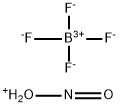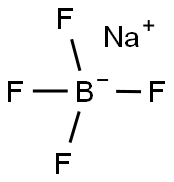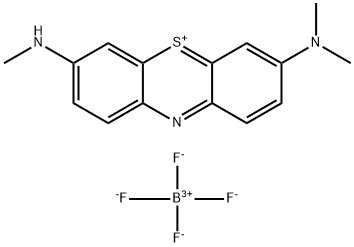Cadmium fluoroborate
- CAS NO.:14486-19-2
- Empirical Formula: B2CdF8
- Molecular Weight: 286.02
- MDL number: MFCD00015993
- EINECS: 238-490-5
- SAFETY DATA SHEET (SDS)
- Update Date: 2024-12-18 14:07:02

What is Cadmium fluoroborate ?
Chemical properties
colorless liquid [STR93]
The Uses of Cadmium fluoroborate
Cadmium Fluoroborate can be used as a catalyst.
General Description
Colorless odorless aqueous solution. Sinks and mixes with water.
Air & Water Reactions
Water soluble.
Reactivity Profile
Cadmium fluoroborate acts as a weakly acidic inorganic salt, which is soluble in water. The resulting solutions contain moderate concentrations of hydrogen ions and have pH's of less than 7.0. They react as acids to neutralize bases. These neutralizations generate heat, but less or far less than is generated by neutralization of inorganic acids, inorganic oxoacids, and carboxylic acid. They usually do not react as either oxidizing agents or reducing agents but such behavior is not impossible. Many of these compounds catalyze organic reactions.
Health Hazard
Ingestion produces severe toxic symptoms; both kidney and liver injuries may occur; may be fatal. Contact with eyes or skin causes irritation.
Fire Hazard
Special Hazards of Combustion Products: Toxic hydrogen fluoride and cadmium oxide fumes may form in fires.
Safety Profile
Suspected human carcinogen. Poison by ingestion and inhalation. When heated to decomposition it emits very toxic fumes of Cd and F-. See TETRAFLUOROBORATE.
Properties of Cadmium fluoroborate
| Density | 1.485 g/mL at 25 °C |
| Flash point: | >230 °F |
| solubility | very soluble in H2O, ethanol |
| color | colorless hygroscopic liquid |
| CAS DataBase Reference | 14486-19-2(CAS DataBase Reference) |
| EPA Substance Registry System | Borate(1-), tetrafluoro-, cadmium (2:1) (14486-19-2) |
Safety information for Cadmium fluoroborate
| Signal word | Warning |
| Pictogram(s) |
 Exclamation Mark Irritant GHS07 |
| GHS Hazard Statements |
H302:Acute toxicity,oral H315:Skin corrosion/irritation H319:Serious eye damage/eye irritation |
| Precautionary Statement Codes |
P264:Wash hands thoroughly after handling. P264:Wash skin thouroughly after handling. P270:Do not eat, drink or smoke when using this product. P280:Wear protective gloves/protective clothing/eye protection/face protection. P302+P352:IF ON SKIN: wash with plenty of soap and water. P305+P351+P338:IF IN EYES: Rinse cautiously with water for several minutes. Remove contact lenses, if present and easy to do. Continuerinsing. P332+P313:IF SKIN irritation occurs: Get medical advice/attention. P337+P313:IF eye irritation persists: Get medical advice/attention. |
Computed Descriptors for Cadmium fluoroborate
New Products
Tert-butyl bis(2-chloroethyl)carbamate 4-Methylphenylacetic acid N-Boc-D-alaninol N-BOC-D/L-ALANINOL N-octanoyl benzotriazole 3-Morpholino-1-(4-nitrophenyl)-5,6-dihydropyridin- 2(1H)-one Furan-2,5-Dicarboxylic Acid DIETHYL AMINOMALONATE HYDROCHLORIDE 1,1’-CARBONYLDIIMIDAZOLE R-2-BENZYLOXY PROPIONIC ACID 1,1’-CARBONYLDI (1,2-4 TRIAZOLE) N-METHYL INDAZOLE-3-CARBOXYLIC ACID (2-Hydroxyphenyl)acetonitrile 4-Bromopyrazole 5-BROMO-2CYANO PYRIDINE 5,6-Dimethoxyindanone 5-broMo-2-chloro-N-cyclopentylpyriMidin-4-aMine 2-(Cyanocyclohexyl)acetic acid 4-methoxy-3,5-dinitropyridine 1-(4-(aminomethyl)benzyl)urea hydrochloride 2-aminopropyl benzoate hydrochloride diethyl 2-(2-((tertbutoxycarbonyl)amino) ethyl)malonate tert-butyl 4- (ureidomethyl)benzylcarbamate Ethyl-2-chloro((4-methoxyphenyl)hydrazono)acetateRelated products of tetrahydrofuran








You may like
-
 Cadmium fluoroborate CAS 14486-19-2View Details
Cadmium fluoroborate CAS 14486-19-2View Details
14486-19-2 -
 1975-50-4 98%View Details
1975-50-4 98%View Details
1975-50-4 -
 2-HYDROXY BENZYL ALCOHOL 98%View Details
2-HYDROXY BENZYL ALCOHOL 98%View Details
90-01-7 -
 2-Chloro-1,3-Bis(Dimethylamino)Trimethinium Hexafluorophosphate 221615-75-4 98%View Details
2-Chloro-1,3-Bis(Dimethylamino)Trimethinium Hexafluorophosphate 221615-75-4 98%View Details
221615-75-4 -
 61397-56-6 CIS BROMO BENZOATE 98%View Details
61397-56-6 CIS BROMO BENZOATE 98%View Details
61397-56-6 -
 14714-50-2 (2-Hydroxyphenyl)acetonitrile 98+View Details
14714-50-2 (2-Hydroxyphenyl)acetonitrile 98+View Details
14714-50-2 -
 118753-70-1 98+View Details
118753-70-1 98+View Details
118753-70-1 -
 733039-20-8 5-broMo-2-chloro-N-cyclopentylpyriMidin-4-aMine 98+View Details
733039-20-8 5-broMo-2-chloro-N-cyclopentylpyriMidin-4-aMine 98+View Details
733039-20-8